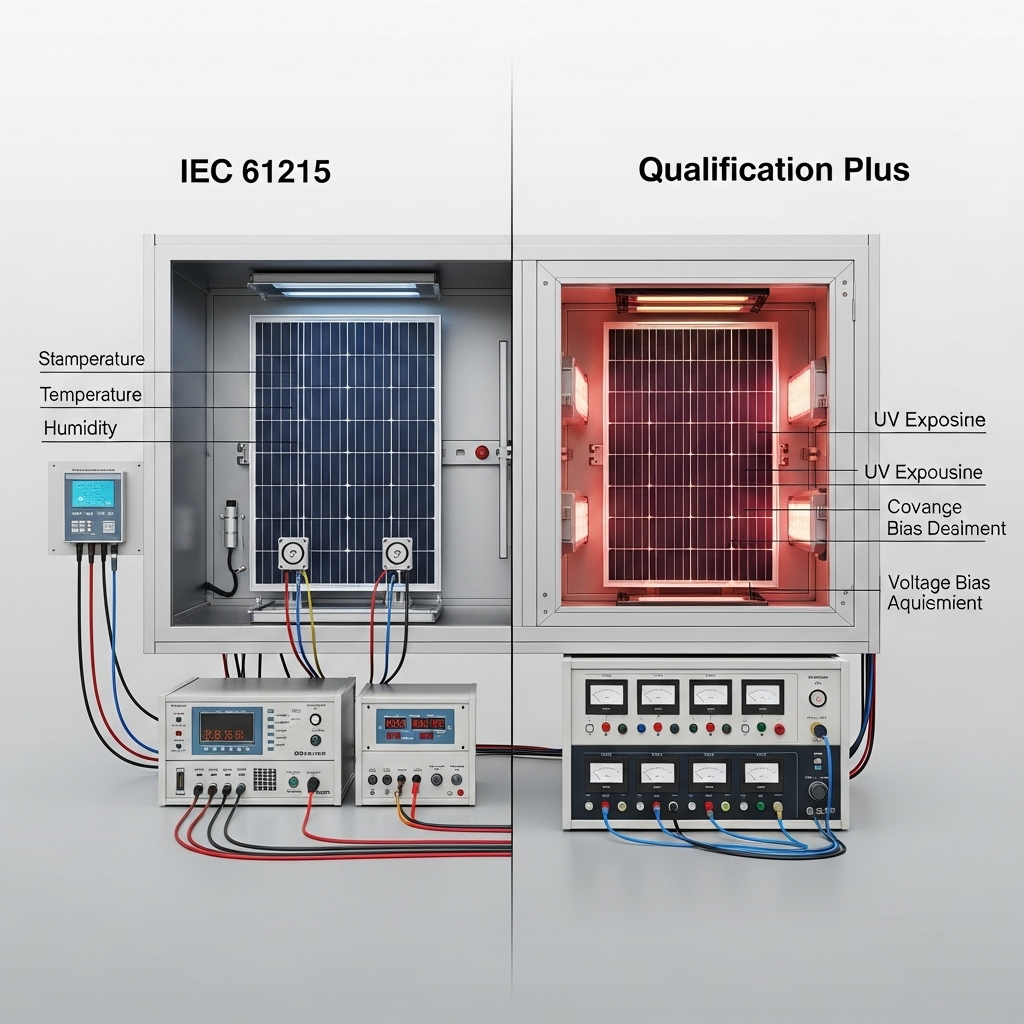Commissioning is the final, critical step before a solar and energy storage system goes live. It's a phase where every connection is tested and every function is verified. Yet, this process is often clouded by misconceptions, particularly concerning Rapid Shutdown (RSD) and Energy Storage System (ESS) safety. Separating myths from reality is not just about compliance; it's about protecting personnel, first responders, and the long-term integrity of the asset. This article clarifies common misunderstandings and provides a practical framework for safe commissioning.
The Foundation: Understanding RSD and ESS in Modern Solar Installations
Before tackling the myths, it's important to have a clear picture of what these components are and the safety functions they are designed to serve. They represent significant advancements in making solar technology safer for everyone.
What is Rapid Shutdown (RSD)? A Safety Mandate
Rapid Shutdown is a safety requirement for solar PV systems. Its primary purpose is to provide a controlled way to de-energize the solar conductors on a building. This allows firefighters and other first responders to safely perform their duties without the risk of electrical shock from the solar array. It creates a safer operating environment on the roof by reducing system voltage to a touch-safe level in a matter of seconds.
The Role of Energy Storage Systems (ESS)
Energy Storage Systems, typically utilizing high-performance lithium-ion batteries, are becoming a standard feature in solar installations. They store excess solar energy for use when the sun isn't shining, providing energy independence and grid stability. However, their ability to store and deliver large amounts of DC power introduces unique safety considerations that must be managed, especially during the initial startup and testing phase of commissioning.
Myth #1: RSD Guarantees a Completely De-Energized System Instantly
One of the most pervasive myths is that activating the RSD makes the entire solar installation immediately safe to touch. This oversimplification can lead to dangerous assumptions during commissioning and maintenance.
The Reality: Controlled De-Energization and Stored Energy
RSD effectively de-energizes the DC conductors from the solar array, but it does not eliminate all electrical hazards. The ESS, by its very nature, remains a potent source of stored energy. The battery bank, inverter capacitors, and associated high-voltage DC wiring between them can remain live even after the RSD is initiated. For this reason, proper lockout/tagout (LOTO) procedures are non-negotiable. Technicians must always verify the absence of voltage with a properly rated multimeter before beginning work.
Commissioning Best Practices: Verifying RSD Functionality
Functional testing is the only way to confirm the RSD system works as intended. This verification process should include:
- Activating the RSD initiator and timing the system's response to ensure it meets the required shutdown speed.
- Using a multimeter to measure the voltage of the controlled conductors after shutdown to confirm they are at or below the mandated safe level.
- Confirming that all components, including the inverter and the RSD devices themselves, report the correct status.
Myth #2: Commissioning an ESS is Just Like Commissioning a Standard PV System
Treating an ESS as a simple add-on to a PV system is a critical error. The presence of a high-capacity battery introduces risks that require specialized procedures and a heightened level of caution.
The Reality: Unique Hazards of Stored Energy
Commissioning an ESS involves significant arc flash and shock hazards due to the high DC currents available from the battery. Unlike a PV array that needs light to produce dangerous power, a battery is always 'on'. According to the International Renewable Energy Agency (IRENA), robust health and safety management, including fire detection and prevention, is a cornerstone of technical operations for renewable assets. For ESS, this means using appropriate Personal Protective Equipment (PPE), including arc-rated clothing and insulated tools, is mandatory.
A Step-by-Step Approach to Safe ESS Commissioning
A methodical approach is essential for a safe and successful ESS startup. Key steps include:
- Pre-Commissioning Checks: Verify all electrical connections are torqued to manufacturer specifications. Check for correct polarity on all DC circuits and confirm all communication wiring is correctly installed.
- BMS Verification: Power up the Battery Management System (BMS) independently. Ensure it is communicating correctly with each battery module and the system inverter. Configure all safety parameters as specified by the manufacturer.
- Initial Energization: Follow the manufacturer's specific startup sequence. This usually involves closing breakers in a prescribed order to pre-charge inverter capacitors and prevent large inrush currents.
- Functional Testing: Perform a controlled charge and discharge cycle. Monitor battery voltages, temperatures, and currents to ensure they remain within safe operating limits. Testing performance metrics is a vital part of this process. A deeper understanding of these metrics, such as state of charge and depth of discharge, is available in this ultimate reference on solar storage performance.
Myth #3: Passing a Visual Inspection is Enough for Safety Compliance
A clean installation that passes a visual inspection is a good start, but it is not a confirmation of safety or functionality. The most critical safety systems are dynamic and their operation cannot be verified by sight alone.
The Reality: The Critical Role of Functional Testing
Functional testing is where reality confronts design. It is the process of actively proving that the RSD and ESS safety features will work in a real-world event. A visual check confirms the system was built to plan; a functional test confirms it operates safely. The International Energy Agency (IEA) emphasizes that rigorous testing protocols are vital for ensuring the safety and reliability of energy technologies.
Tools and Techniques for Comprehensive Commissioning
A professional commissioning process relies on more than just a visual check. Specialized tools are required to get a complete picture of system health and safety.
| Inspection Type | Key Checks | Purpose |
|---|---|---|
| Visual Inspection | Correct labeling, proper conduit support, clearance around equipment, no visible damage | Confirms installation meets basic code and design requirements. |
| Functional Testing | RSD activation time, voltage levels post-shutdown, ESS charge/discharge cycles, BMS alerts | Verifies that safety systems operate correctly and the system performs as expected. |
A Forward Look: The Future of Commissioning Safety
The commissioning process is evolving. Advanced Battery Management Systems now offer sophisticated self-diagnostics that can identify potential issues before they become critical failures. Remote commissioning capabilities allow experts to support on-site technicians, improving both efficiency and safety. As the industry grows, continuous education for installers and inspectors on these new technologies and procedures will be paramount to maintaining a high standard of safety and reliability across all installations.
Frequently Asked Questions
What is the most common mistake during RSD commissioning?
A frequent error is relying solely on an inverter's status screen to confirm shutdown. The only true verification is to use a properly rated multimeter to measure the voltage on the controlled conductors directly. Another common mistake is failing to test the RSD initiator from every possible location if multiple exist.
Do I need special certification to commission an ESS?
While national requirements can vary, manufacturer-specific training is almost always a prerequisite for commissioning an ESS and is often required to maintain the product warranty. A deep understanding of high-voltage DC circuits and battery safety protocols is essential, regardless of formal certification.
How does temperature affect ESS commissioning?
Battery performance and safety are directly impacted by temperature. Commissioning should be performed within the manufacturer's specified ambient temperature range. During initial charge/discharge cycles, using a thermal imaging camera is a valuable technique for identifying any abnormal hot spots on terminals or connections that could indicate a problem.
Can I commission a system alone?
It is a strong safety recommendation to never work alone when commissioning high-voltage equipment like an ESS. The 'buddy system' ensures that a second person is available to provide assistance or call for help in an emergency. This is a fundamental principle of safe electrical work.





Leave a comment
All comments are moderated before being published.
This site is protected by hCaptcha and the hCaptcha Privacy Policy and Terms of Service apply.